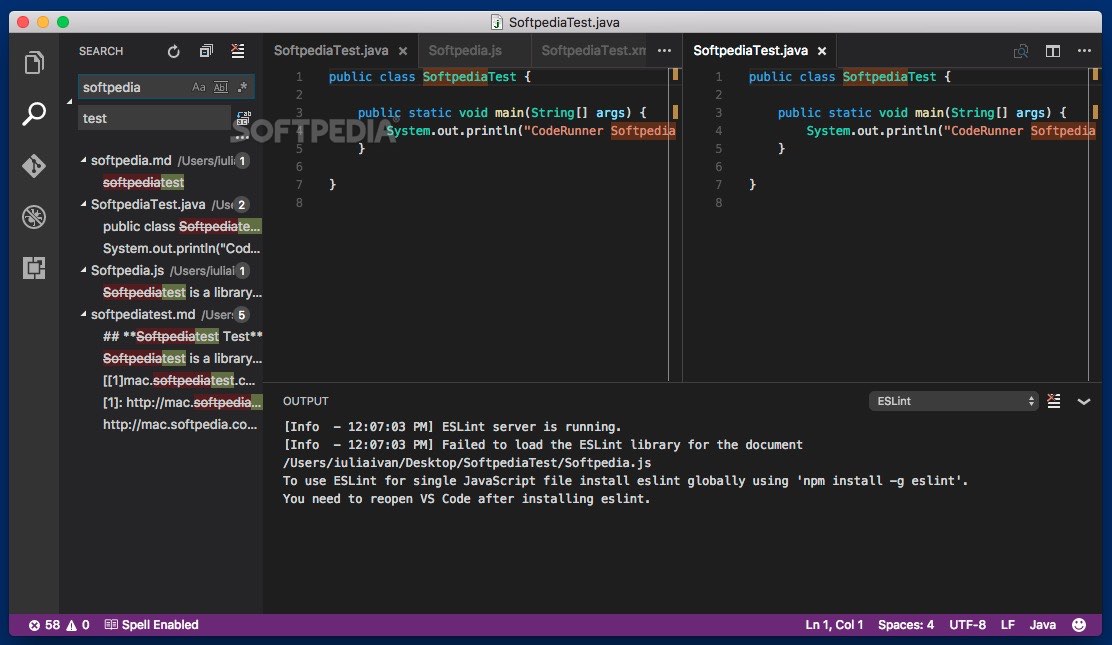- Mac Os X 10.9
- Mac Os X 10.9 5 Iso Download Iso
- Mac Os 10.5 Iso
- Mac Os 10.4 Iso Download
- Mac Os 10.5.8 Download Iso
Though you can install Mavericks (OS X 10.9) directly from your Mac's hard drive, a bootable installer drive can be more convenient for installing the OS onto multiple Macs. And if your Mac is.
The new Mac OS X is compatible with any Mac PC that was previously running Mac OS X versions 10.8 - Mountain Lion, 10.9 - Mavericks, 10.10 - Yosemite. The reason why Mac computers only with Mavericks upgrade or latest will work with download El Capitan is thanks to Apple not removing any Mac hardware from its Mac OS X support list since. Mac OS X Mavericks 10.9.5 Installer download free. full Version retains all the features and functions that previous os x 10.9 download have. It’s a beautiful system with trademark soft, but intuitive design, this time utilizing a soothing green palette.
- Create an OS X 10.9 Mavericks bootable ISO From your current OS X installation, go to the App Store and download OS X Mavericks. Do not perform the installation until you’re done, because otherwise it will remove the 5+GB file you need. Also make sure you have sufficient space to hold the temporary files and the resulting output file.
- Aug 26, 2020 Mac OS X Lion 10.7 is the eighth version of the Mac OS X series. This is completely a different version from Windows. Mac OS X Lion 10.7 ISO depends on the productivity which is suitable for Mac operating system X. This is the reason why Mac is one of the best and successful processors of 2011. This is mainly followed by the Mac of the year 2007.
WWDC 2013 Apple showed their new operating system for the Mac. New Mac OS X named out of Cat family which is called “Mavericks”. Apple released OSX Mavericks (10.9) Developer Preview 1 for all developers. New OSX comes with great features which we are longing for these days. Let me point out few. Tabs in Finder, Password Chain for Browsers, Better notifications and more. Today we going to show how to create Bootable USB Drive to Install OS X Mavericks.
First You have to download the OS X Mavericks Dev Preview 1 from Apple Developer Site or you can download from various source too. Then take USB Flash drive Minimum of 8GB Capacity. This tutorial is not easy, though we explain each steps clearly. So follow carefully to make it work.
Before Beginning the installation make sure your device is supports or not. OS X Mavericks requirement are (May be changed in final release)

Mac Os X 10.9
- MacBook Air (Late 2008 or later)
- iMac (Mid-2007 or later)
- Xserve (Early 2009)
- MacBook (13-inch Aluminum, Late 2008), (13-inch, Early 2009 or later)
- MacBook Pro (13-inch, Mid-2009 or later), (15-inch, Mid/Late 2007 or later), (17-inch, Late 2007 or later)
- Mac Pro (Early 2008 or later)
- Mac Mini (Early 2009 or later)
Preparing USB drive for Bootable OS X Mavericks
- Plug in the USB drive to the Mac and Launch Disk Utility
- Now Select the USB drive from the left side menu and Select Partition tab and choose “1 Partition“. Then Click Options button.
- Select GUID Partition Table in the Popup box and Click OK and Click Apply to the Disk Utility.
Before Mounting the “OS X 10.9 Mavericks Developer Preview 1.dmg” file or Opening Installer. You have to enable the feature to show hidden files. Lets see how to do that.

- Launch Terminal and type the Following command

defaults write com.apple.Finder AppleShowAllFiles TRUE;killall Finder;say Files Revealed
Note: Your Finder will be restarted and it will be show the hidden files in your Mac. ( You can use the same command instead of TRUE, type FALSE to hide the hidden files after preparing the Bootable drive)
- If you already have DMG File, Just Mount Directly or You have downloaded App file of the Installer go to Applications folder to locate “Install OS X 10.9 Developer Preview.app” file.
- Right Click and select “Show Package Contents” and Navigate to /Contents/SharedSupport.
- You can find InstallESD.dmg file. Mount the DMG file.
- Open the mounted “OS X Install ESD“, you can find “BaseSystem.dmg“, “BaseSystem.chunklist” Files and “Packages” Folder. (If you cant able to see “BaseSystem.dmg” Kindly follow the above terminal command to reveal the hidden files.)
- Now Mount the “BaseSystem.dmg” file.
- Now again open Disk Utility and select BaseSystem.dmg from the left sidebar. Click Restore Tab to open Restore options.
- Set Source to “BaseSystem.dmg” and Drag and drop the USB drive into the Destination box (as per below image). Then Click Restore.
- Disk Utility ask for the confirmation for erasing the USB drive. Click Erase and Give password if asked. Wait till the process is finished.
Now we are in Final Step to complete the Bootable USB Drive. Now you have to replace few files to your USB Drive.
Now Open Finder and Navigate to your USB drive. Open System Folder then Installation Folder. You can See “Packages” alias file (Shortcut file). Delete Packages alias file. (Now we have to copy Package folder from another location, so keep this folder open.)
Now Go back to the OS X Install ESD Mounted image. You can see “Packages” Folder. Copy the Packages Folder and Paste in the directory where you have deleted Packages alias file. (USB/SYSTEM/Installation/). Even you can drag and drop the folder. It takes few minutes to copy all the files.
Mac Os X Download Iso
Now your USB flash drive is Bootable and you can install OS X Mavericks. Just Plug your bootable flash drive and reboot your mac. While booting up Press and hold Option Key, it will ask to choose Boot Drives. Select the Pen drive (Orange Drive with USB Symbol) named “OS X Base System 1” which we created now. Now OS X Mavericks starts installing. If you have any doubts, watch below video tutorial or drop your query as comments.
If you like this post, Share it to your friends. Dont forget to Subscribe our Feeds, Follow us on Twitter, Facebook and Pinterest.
Amazon.com WidgetsThese advanced steps are primarily for system administrators and others who are familiar with the command line. You don't need a bootable installer to upgrade macOS or reinstall macOS, but it can be useful when you want to install on multiple computers without downloading the installer each time.
What you need to create a bootable installer
- A USB flash drive or other secondary volume, formatted as Mac OS Extended, with at least 12GB of available storage
- A downloaded installer for macOS Big Sur, Catalina, Mojave, High Sierra, or El Capitan
Mac Os X 10.9 5 Iso Download Iso
Download macOS
- Download: macOS Big Sur, macOS Catalina, macOS Mojave, or macOS High Sierra
These download to your Applications folder as an app named Install macOS [version name]. If the installer opens after downloading, quit it without continuing installation. To get the correct installer, download from a Mac that is using macOS Sierra 10.12.5 or later, or El Capitan 10.11.6. Enterprise administrators, please download from Apple, not a locally hosted software-update server. - Download: OS X El Capitan
This downloads as a disk image named InstallMacOSX.dmg. On a Mac that is compatible with El Capitan, open the disk image and run the installer within, named InstallMacOSX.pkg. It installs an app named Install OS X El Capitan into your Applications folder. You will create the bootable installer from this app, not from the disk image or .pkg installer.
Use the 'createinstallmedia' command in Terminal
- Connect the USB flash drive or other volume that you're using for the bootable installer.
- Open Terminal, which is in the Utilities folder of your Applications folder.
- Type or paste one of the following commands in Terminal. These assume that the installer is in your Applications folder, and MyVolume is the name of the USB flash drive or other volume you're using. If it has a different name, replace
MyVolumein these commands with the name of your volume.
Big Sur:*
Catalina:*
Mojave:*
High Sierra:*
El Capitan:
Mac Os 10.5 Iso
* If your Mac is using macOS Sierra or earlier, include the --applicationpath argument and installer path, similar to the way this is done in the command for El Capitan.

After typing the command:
- Press Return to enter the command.
- When prompted, type your administrator password and press Return again. Terminal doesn't show any characters as you type your password.
- When prompted, type
Yto confirm that you want to erase the volume, then press Return. Terminal shows the progress as the volume is erased. - After the volume is erased, you may see an alert that Terminal would like to access files on a removable volume. Click OK to allow the copy to proceed.
- When Terminal says that it's done, the volume will have the same name as the installer you downloaded, such as Install macOS Big Sur. You can now quit Terminal and eject the volume.
Mac Os 10.7 Iso Download
Use the bootable installer
Determine whether you're using a Mac with Apple silicon, then follow the appropriate steps:
Apple silicon
- Plug the bootable installer into a Mac that is connected to the internet and compatible with the version of macOS you're installing.
- Turn on your Mac and continue to hold the power button until you see the startup options window, which shows your bootable volumes and a gear icon labled Options.
- Select the volume containing the bootable installer, then click Continue.
- When the macOS installer opens, follow the onscreen instructions.
Intel processor
- Plug the bootable installer into a Mac that is connected to the internet and compatible with the version of macOS you're installing.
- Press and hold the Option (Alt) ⌥ key immediately after turning on or restarting your Mac.
- Release the Option key when you see a dark screen showing your bootable volumes.
- Select the volume containing the bootable installer. Then click the up arrow or press Return.
If you can't start up from the bootable installer, make sure that the External Boot setting in Startup Security Utility is set to allow booting from external media. - Choose your language, if prompted.
- Select Install macOS (or Install OS X) from the Utilities window, then click Continue and follow the onscreen instructions.
Learn more
For more information about the createinstallmedia command and the arguments that you can use with it, make sure that the macOS installer is in your Applications folder, then enter the appropriate path in Terminal:
- Big Sur: /Applications/Install macOS Big Sur.app/Contents/Resources/createinstallmedia
- Catalina: /Applications/Install macOS Catalina.app/Contents/Resources/createinstallmedia
- Mojave: /Applications/Install macOS Mojave.app/Contents/Resources/createinstallmedia
- High Sierra: /Applications/Install macOS High Sierra.app/Contents/Resources/createinstallmedia
- El Capitan: /Applications/Install OS X El Capitan.app/Contents/Resources/createinstallmedia
Mac Os 10.4 Iso Download
A bootable installer doesn't download macOS from the internet, but it does require an internet connection to get firmware and other information specific to the Mac model.
Mac Os 10.5.8 Download Iso
